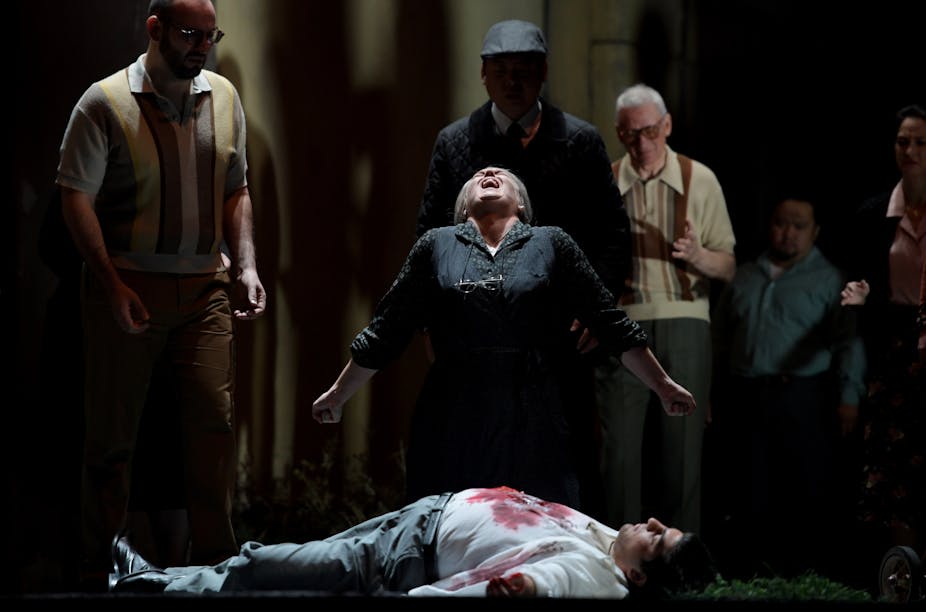It is a strange reality but opera as an artform is always given special and arguably preferential treatment by governments and other influential forces in Western society. This happens, it seems, regardless of whatever government is in power.
It is argued that opera represents the “highest” of artforms given its combination of music, theatre dance and the visual arts. Certainly it usually receives the most financial rewards from government and often also from private benefactors.
In 2015-16, Australian opera companies received $23.7 million from the Australia Council, representing 13.7% of the council’s overall grant allocation. Opera, while seen as an art that embraces other artforms, is located primarily within music. Music overall receives 53% of the council’s allocation. This compares with 2.7% given to literature and 9.7% given to the visual arts.
Since 2015, when the arts funding scene in Australia was afflicted by cuts and controversy instigated by George Brandis’s grant heist at the Australia Council, one area has been totally unaffected and protected - the major performing arts sector. Its share of the funding pool in 2015-16 was $107.8 million (or 62%) out of a total pool of grants in 2016 of $173.75 million. This amount was divided between 28 companies; Opera Australia received the largest individual share. Overall, Opera Australia received $25.5 million in federal and state government grants in 2016.
When arts minister Mitch Fifield announced in March 2017 the return of much of the money taken by Brandis from the Australia Council, he nevertheless directed that $1 million of this should be allocated to funding the recommendations of the National Opera Review. So while the opera sector had not been cut during the previous two years, it was nevertheless going to be rewarded with more funding (arguably taken from the small to medium sector originally).
The National Opera Review was commissioned in 2014, with the final report released in October 2016. The review was asked, under its Terms of Reference, to make recommendations aimed at promoting the financial viability, artistic vibrancy and accessibility of Australia’s four major opera companies: Opera Australia, Opera Queensland, State Opera of South Australia, and West Australian Opera.
While containing many interesting recommendations, the review re-affirms the special status of opera and the companies involved. As the rest of the arts sector was scrambling to survive because of the enforced cuts, the opera sector, it seems, continued to be protected.
For example, the review recommends that Opera Queensland, which has been operating mostly in deficit over a period of six years, should be given another three years to get its house together. Through this period of trying to “improve”, the company remains a member of the Major Performing Arts Board. This is despite the fact that the board is said to demand the highest artistic and financial standards of its members.
If Opera Queensland is still unable to manage itself after three years, only then will it cease to receive government funds. This recommendation seems to contrast dramatically with what would happen to any other arts company in a similar situation receiving government funding.
On September 20, the federal government released its official response to the review. Some of the interesting recommendations that have been agreed to (at least in principle) by government include the provision of an “innovation” fund of $1.2 million for opera companies so that they are encouraged to produce new work.
Unlike the rest of the arts sector, which produces new work as part of its standard remit, the opera companies will receive an incentive for doing this. Overall the review recommends more core funding for the opera companies (in addition to the innovation fund).
More shocking is that the government has agreed in principle with a recommendation to penalise companies (by up to $200,000) if they do not balance the employment of Australian and overseas artists. It seems that the percentage of Australians employed by opera companies in leading roles has dramatically declined over the past decade, particularly at Opera Australia. It goes without saying that a basic expectation of government funding would be that it goes towards the employment of Australian artists. But the penalty seems an odd choice when this could be a condition of receiving government funding in the first place.
Reminiscent of the US governance approach (“give, get or get off”) the review recommends that directors of opera boards should be “making a financial contribution (regardless of size) and assisting with raising funds”. In this model, the role of a board director is to be a fundraiser, a philanthropist or both. This automatically limits the range of board member skills and ensures that most board members of opera companies are expected to be independently wealthy. The government has agreed to this.
Further recommendations are that the Australia Council should be given extra funding ($250,000) to employ staff with specialised expertise in understanding the needs of opera companies. Such staff should be senior enough to be taken seriously by the companies concerned.
While the opera review members have been thorough in their approach, the premise of the review and of the government’s response is that opera and opera companies should continue to be a privileged sector in the arts spectrum.
The people who are involved with opera companies generally represent the most privileged in society - the wealthy and powerful. The review recommends that this should be further enhanced.
Over the past three years arts funding has been a contested domain, yet the opera sector has been protected from this and continues to be so. Is this the basis of a democratic system?

